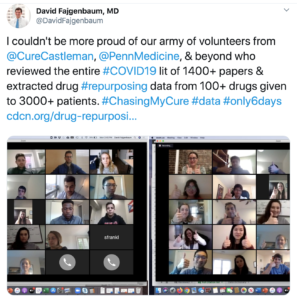Politics, Science, and Other Assorted Musings
I love helping people understand issues and look at them from a different perspective. In this blog, I hope I can offer you some new insights—bridging the gap between basic science and your medicine chest—as I am still a practicing physician, as well as having had broad clinical research experience. I'm interested in developing new medicines and treatments, as well as caring for patients—and explaining these topics for you.
As medicine has evolved, so have my interests. I have also become increasingly interested in health disparities, social justice issues, and ethics. I invite you to join me as we explore a variety of territories. I hope that reading these posts will encourage you to learn, engage, and above all, work for the forces of good.
If there are topics you'd like to see me cover, please let me know—I welcome your input as to what you would like us to discuss in this column.
Coronavirus - COVID19
Please note that I will be posting Coronavirus Tidbits of news here. You can sign up for updates by clicking the box at the right and subscribe to Covid, Politics, and Science. All Covid posts will go here, and I will upload back issues as I have time. Please share w friends. Thanks!
I’m going to have a reference file here for articles I have found particularly worthwhile, and will update this here as we learn new information. Click on the COVID-19 Resources, below, to expand that.
If you see something terrific, please share. We’re all in this together.
Quick links News Diagnostics Drugs Epidemiology/Infection control Tips Politics Feel good du jour Comic relief Perspective/Poem Bits of beauty Coronavirus Tidbits #24 News: My new post How Much Should You Worry About Your Pets? A Cat Was Confirmed To Be Infected With COVID19 By Its Owner ~ ~ ~ From Orban to Kaczynski, Wannabe Autocrats Love the Pandemic In Hungary and Poland — as in Israel and elsewhere — liberty suddenly seems cheap. Even in a pandemic, it shouldn’t be. bloomberg.com Hungarian legislature adopted an “empowerment law” (which sounds very much like the 1930’s “enabling act” which led to Hitler’s rise. Orban can now rule by decree, with no limits–indefinitely. It is an appalling story, done in the name of the coronavirus emergency. I wonder how many wannabe dictators will follow suit. He has extensive new powers including imprisoning people for “distorting” facts. The author, Andreas Kluth, says Poland and Hungary are providing a user’s manual for such takeovers, a “coronavirus coup.” He says Bibi, Cambodian PM, India’s Modi, and Brazil are following suit. Hungary and Poland have also stacked the court with loyalists who will presumably support their moves, and the EU can’t punish them w/o unanimity….
Read MoreNews: Best news of the day: ‘Going full-on MacGyver’ – U of MN doctor creates makeshift ventilators to battle COVID-19 Even better, in some ways, he’s also made the plans OPEN Source and will be updating here Physical Prototype Video: https://youtu.be/3ssVoWEVxw4 CAD Prototype Video: https://youtu.be/RpEqtGa2vTI Diagnostics: Rapid diagnostic tests are winning approval, like this 5-minute coronavirus test by Abbott Laboratories that won emergency FDA approval The problem is that we don’t yet know enough about the accuracy of the tests, known as sensitivity and specificity? In particular, is a negative test really negative. Until we know more, many ID experts recommend assuming someone who has symptoms is infectious, even if the test is negative. Drugs: Trump’s push for risky malaria drugs disrupts coronavirus response “All this buzz is confusing the American public,” said one senior Health and Human Services official involved in drug policy. “Using untested medicines without the right evidence will raise false hope and even do more harm than good — and cause a shortage of essential medicines that are needed to treat other diseases,” said Tedros Adhanom Ghebreyesus, director-general of the World Health Organization. The battle over chloroquine and hydroxychloroquine: On the one hand: Medical experts and scientists “We need to…
Read MoreNews Wondering if you should seek care for suspected COVID-19? Apple and CDC have a new app and symptom checker with a decision tool. https://www.apple.com/covid19 When can we stop the social distancing? We can’t…at least until there is widespread testing. Then you could monitor and slowly loosen restrictions in selected areas. “To consider letting off on social distancing will require sharp decline in cases, widely available rapid diagnostics wherever pts get clinical care, the right PPE available to all HCWS who need it, safe and good hospital capacity to deal with all pts with COVID.” Tom Inglesby, Johns Hopkins Here’s a thread by Scott Gottlieb that explains more: Our path to safety rests on massive support for our healthcare system to care for sick, and forceful steps by local leaders to break chains of transmission and quell epidemic spread. If we’re smart and aggressive across nation, cases nationally could peak by late April. Then what’s next? We’ll be able to transition away from population based tactics aimed at keeping people at home, to more case based interventions that target people with disease. But we’ll need new public health tools, technology, and tactics to make this transition work…more at https://threadreaderapp.com/thread/1243333347012751361.html ~~~…
Read More




